|
|
|
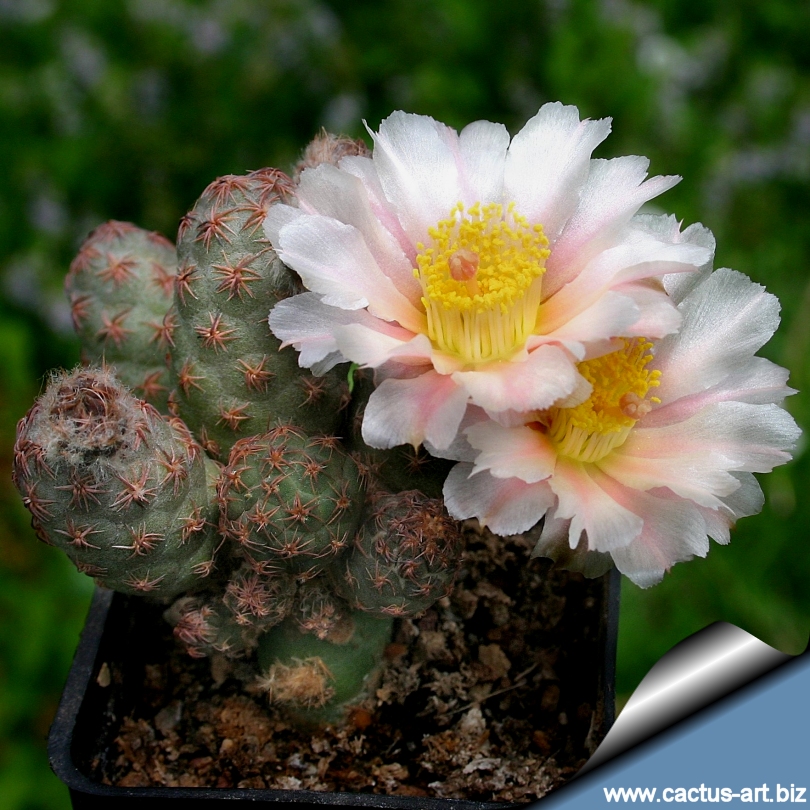
Puna bonnieae Flower Light Pink , 4 cm in diameter
Discovered
by D. J. Ferguson, S. Hogan and Bonnie Brunkow in
the early 1990
|
|
Description: This is a small
geophytic
opuntioid that looks like a small
Tephrocactus geometricus,
but the
bloom,
fruit and the
seeds clearly show its autonomous nature. During the dry season
they are hidden in the ground. It forms slowly small cushion up to
15 cm in diameter.
Stem: Small usually
globular, obconical to slightly elongated up to 2.5 cm tall and
in diameter, they are broadly attached basally and do not detach
easily from the mother plants. It is possibly an
adaptation to high
altitudes. They are dull blue-green but turns to dirty grey as
they ages.
Tubercles: low, bordered with grooves and slightly depressed in
the centre in correspondence of the areole.
Areoles: Up to 30 per segment, closely set, with glochids and
spines only in the upper part of the stem.
Central spines: Absent.
Radial spines: 9 to 20. Pinkish, orangish, reddish to darker
brown in the young stems, they turn to a whitish grey colour with
age. They are very short, flattened and radiating and slightly bent
over the stem.
Roots: It has a large turnip, branched,
subterranean
storage root (The roots of Tephrocactus are fibrous)
Flower: Flower Light Pink or Pinkish, 3-4
cm in diameter, arising from
buds with white
felt. The pericarp is naked or has only few areoles with some
bristle-like spines up to 3 mm long. This feature is typical for
Punas (While the pericarpus of Theprocactus has numerous areoles)
Fruit: The fruit is obovoid, top shaped,
about 1-1,5 cm long almost
naked and free of areoles. It is thin walled, fleshy becoming
dry at maturity.
|
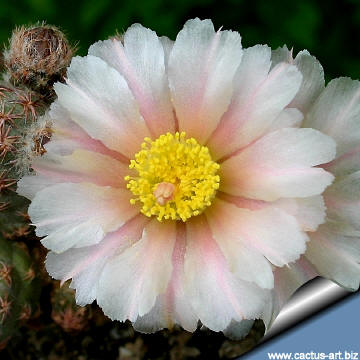 |
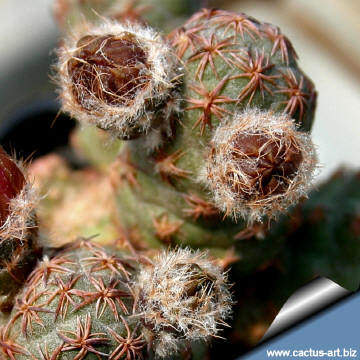 |
|
. |
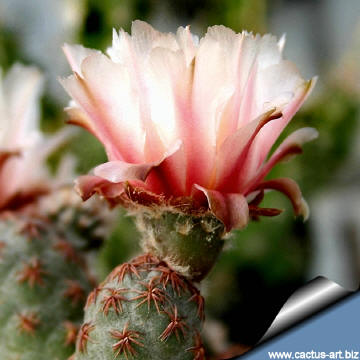 |
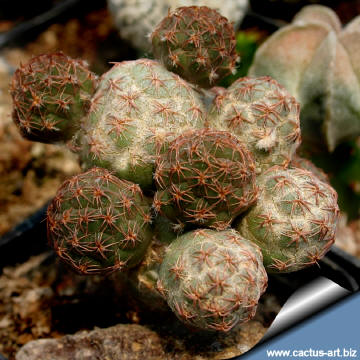 |
|
. |
|
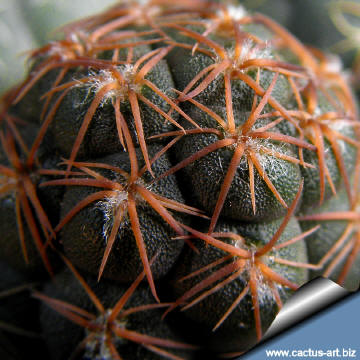
|
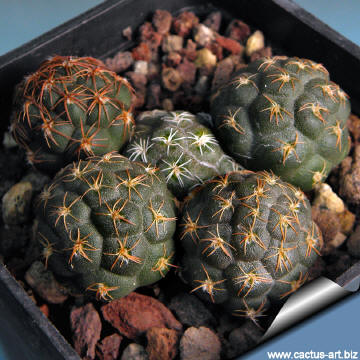
|
|
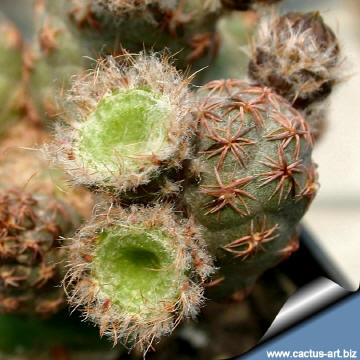
|
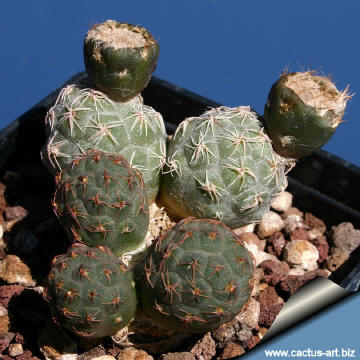
|
|


Advertising
|
|
|
|
|
Family:
Cactaceae
(Cactus Family)
Scientific Name:
Puna
bonnieae
D. J. Ferguson & R. Kiesling 1997
Published
in: David J. Ferguson & Roberto Kiesling CASS(US) Vol.69 No.6
Conservation status:
Listed in
CITES Appendix
II
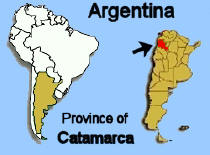 Distribution: type locality is Río Guanchín, near Loro
(Lora) Huasí, Dept. Tinogasta, prov. Catamarca, Argentina ca. 2000 m Distribution: type locality is Río Guanchín, near Loro
(Lora) Huasí, Dept. Tinogasta, prov. Catamarca, Argentina ca. 2000 m
Habitat:
It grows on high altitude in an almost lifeless rocky soil.
The climate conditions are extremely dry, with scarce rains. During the
dry time, the
plant bodies are almost completely
retracted and hidden
into the
ground.
Etymology: The
genus
name
“Puna”
derives from the
indigenous word
"Puna"
that
indicate the western region up to 4500 m that extends from the Peru,
going throughout Bolivia to the Argentinean North. Delimited
at west by a costal chain of high volcanic
picks and by the Cordillera mountainous chain to the east. The
Argentinean Puna is the natural
continuation of the Bolivian highland.
Synonyms:
- Opuntia bonnieae
(D.J. Ferguson et R. Kiesling) J.J. Halda et Z. Janeba 1999
- Maihueniopsis bonnieae
(D.J. Ferguson & R. Kiesling) E.F.
Anderson1999,
In: Cactus and Succulent Journal [U. S. ] 71 (6): 325,
1999
- Puna rugosa
(seldom seen in cultivation under the provisional name Puna
rugosa - officially undescribed - but Opuntia rugosa
Griffiths already exists and grows in southern California
|
|
|
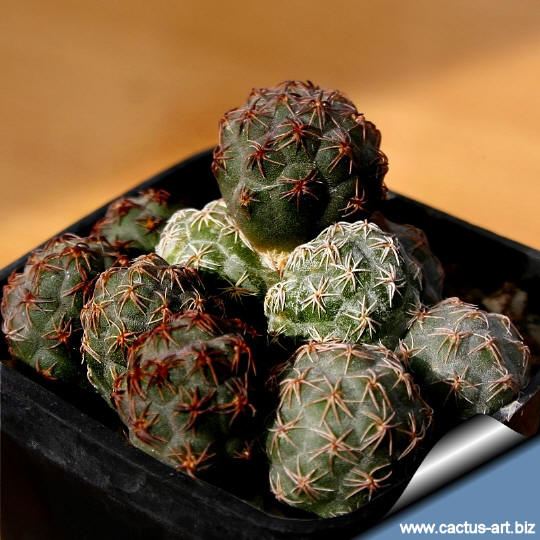
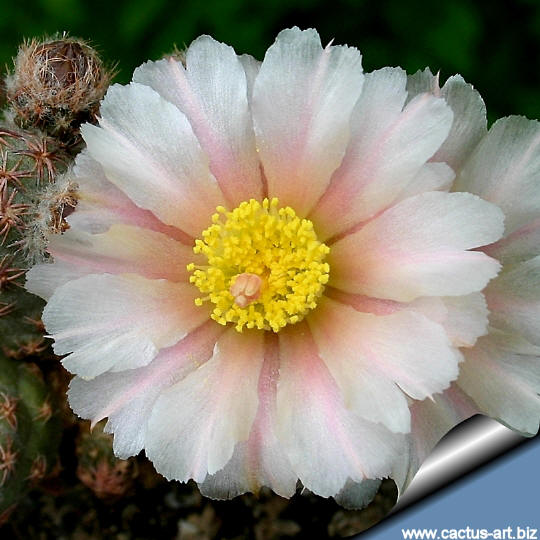
Flower
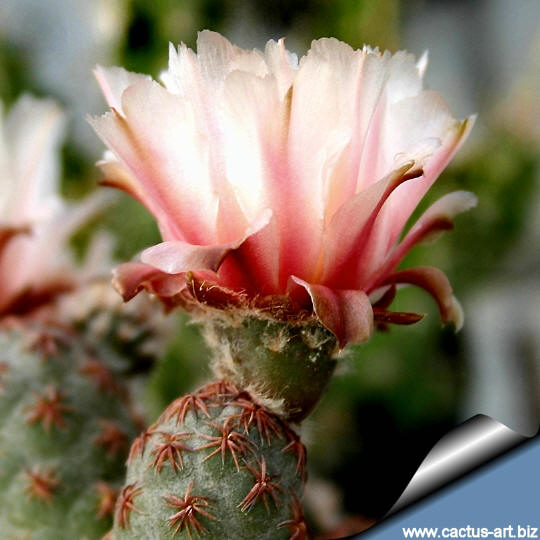
Cultivation:
This
mountain cactus -
because of the
elongated fat
taproot -
necessitate deep
pots
and a well
drained
mineral potting mix.
Need a sufficient
amount of air.
Watering Needs:
They
are
susceptible to
overwatering,
but need enough water during
vegetation.
Frost Tolerance:
They tolerate light frost -5
(-10) °C. Need to be kept
in a cool place during
winter rest this is important for the flowers as
well as for their health. Without this cool winter period they normally
wont get many
buds.
Sun Exposure: Need a good amount of sun.
Propagation:
Usually propagated by
cuttings and
grafting
. Grafted plants in culture are most common and sprout
strongly. But it is also feasible
to
root them but they grow much slower on their own roots and
takes various years prior to they
bloom.
|
|